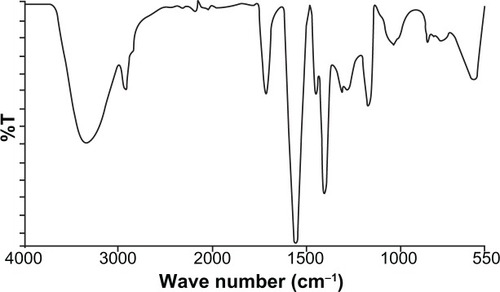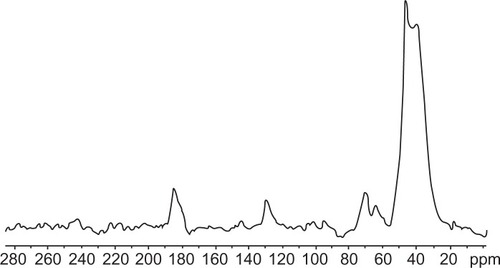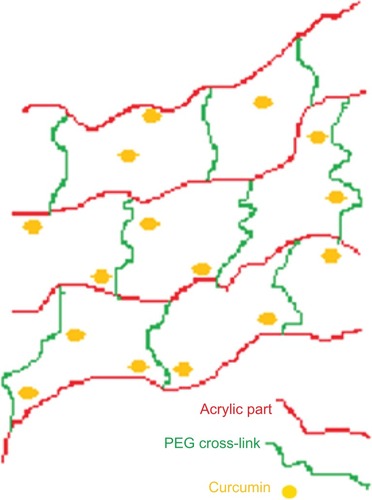Figures & data
Figure 1 Synthesis of polyethylene glycol cross-linked acrylic polymers.
Abbreviation: APS, ammonium persulfate.
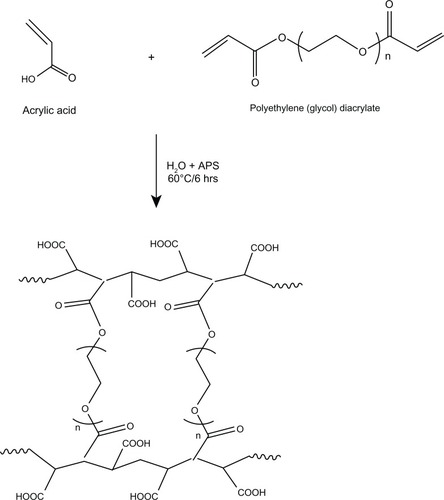
Table 1 Degree of swelling, entrapment efficiency, and particle size of hydrogels
Figure 4 Transmission electron micrographs of polyethylene glycol diacrylate cross-linked acrylic polymers with (A) 0.5% cross-linking and (B) 1.0% cross-linking.
Note: Particle size increased as cross-linking increased.
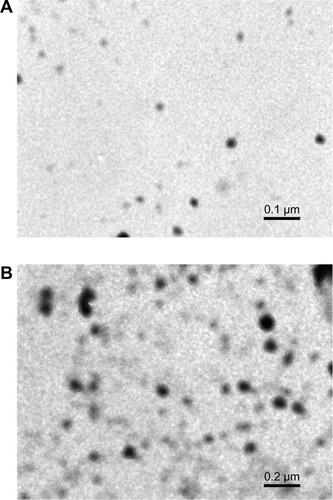
Figure 5 In vitro release of curcumin from polyethylene glycol diacrylate cross-linked acrylic hydrogels with two different percentages of cross-linking: hydrogels with 1.0% cross-linking showed slower release than those with 0.5% cross-linking.
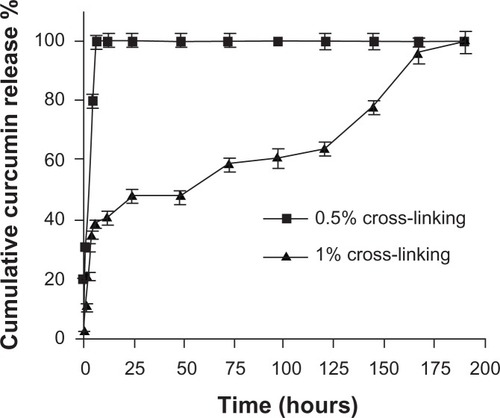
Figure 6 Cellular uptake of curcumin and curcumin nanogels: Human cervical cancer cell lines were treated with 25 μM of curcumin in dimethyl sulfoxide, curcumin in medium, and hydrogels with 0.5% cross-linking or 1% cross-linking, and confocal images were taken after excitation at 420 nm.
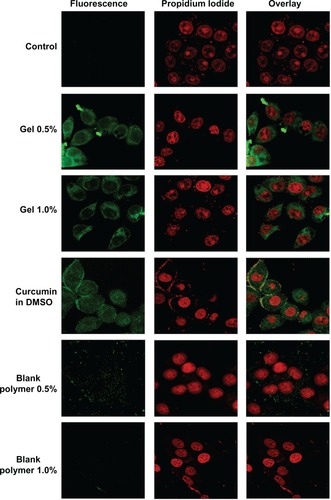
Figure 7 Gel form of curcumin is as effective or slightly more effective in inducing cytotoxicity: (4,5-dimethylthiazol-2-yl)-2, 5-diphenyltetrazolium bromide assay was conducted in human cervical cancer cell lines at various concentrations and time intervals as indicated.
Abbreviations: HeLa, human cervical cancer cell lines; DMSO, dimethyl sulfoxide.
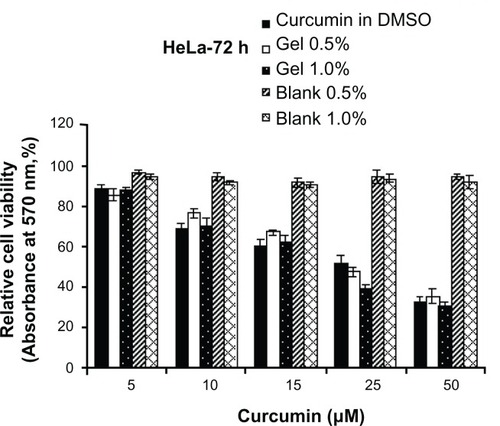
Figure 8 Curcumin nanogels enhance poly(ADP-ribose) polymerase cleavage in human cervical cancer cell lines: Human cervical cancer cell lines cells were treated with the indicated concentrations of free curcumin/curcumin nanogels for 24 hours, and the entire cell lysate was immunoblotted against (A) anticaspase-3, (B) anticaspase-9, and (C) antipoly(ADP-ribose) polymerase antibodies.
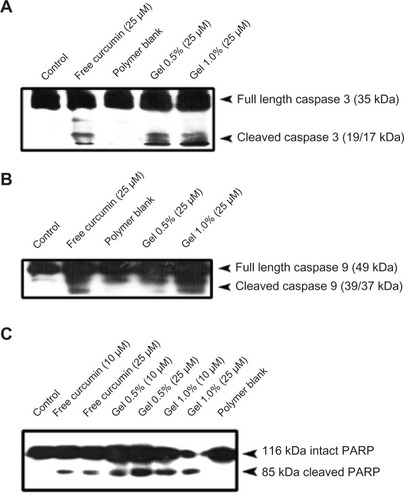
Figure 9 Curcumin and curcumin nanogels inhibit the clonogenic potential of human cervical cancer cell lines: Human cervical cancer cell lines were treated with curcumin dissolved in dimethyl sulfoxide or curcumin nanogels for 72 hours, fresh medium was added and maintained for 1 week, and the clones developed were stained and counted.
Abbreviation: DMSO, dimethyl sulfoxide.
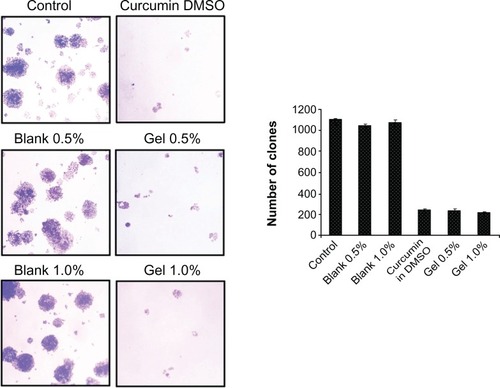
Figure 10 Curcumin and nanogel curcumin induce G2/M arrest of human cervical cancer cell lines.
Notes: Nanogel 1.0% is slightly better than nanogel 0.5%. A24: Blank 0.5%; B24: Blank 1.0%; C24: Control; A25-24: Curcumin nanogel 0.5%; B25-24: Curcumin nanogel 1.0%; C25-24: Curcumin in DMSO. Curcumin concentration is 25 μM.
Abbreviation: DMSO, dimethyl sulfoxide.

